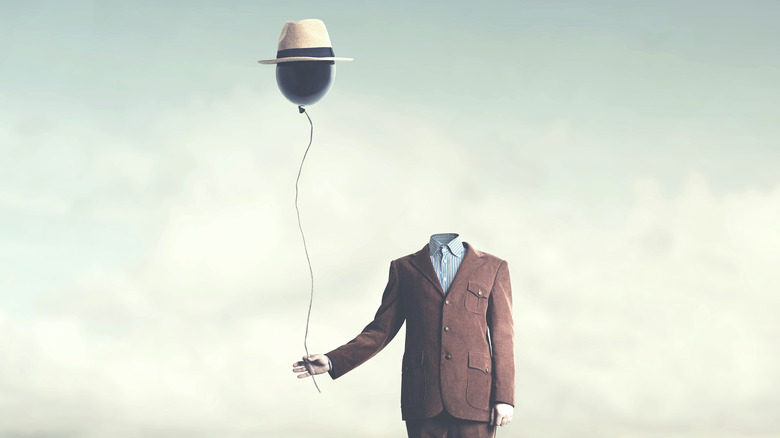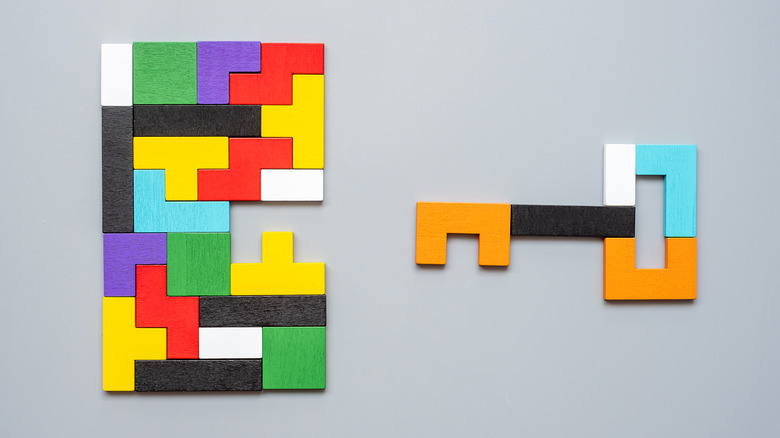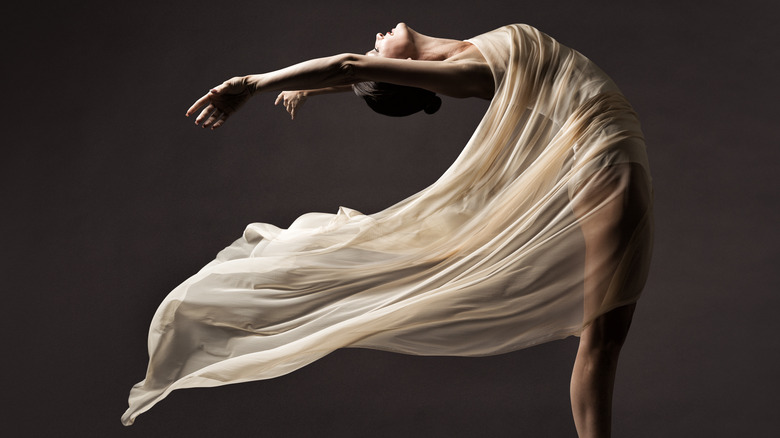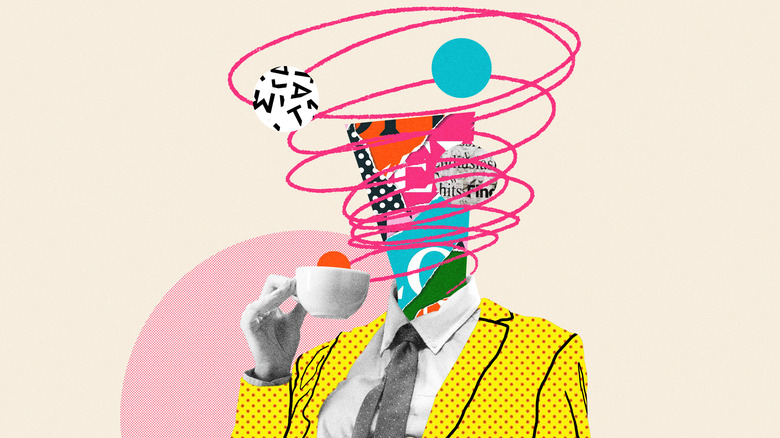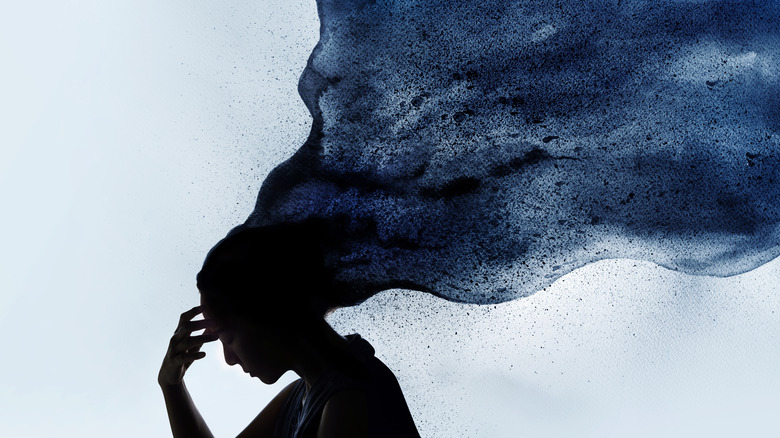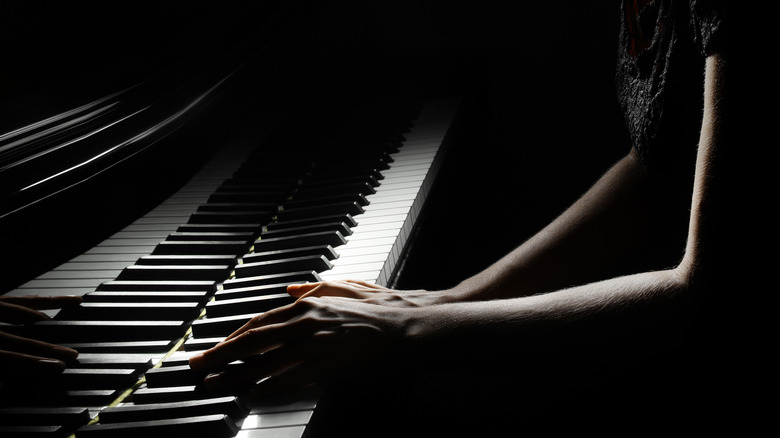What Is Creativity, And Where Does It Come From?
When we say that someone is "creative," what's the first thing that comes to mind? Is it that time your cousin painted his face lavender, stuck a gumdrop on his forehead, and said, "Neigh, neigh, I am the Halloweenicorn this year!" And of course he was prancing around with his arms curled up like horse hooves, and ... you know what? Never mind.
That ridiculous and thankfully fictional micro-story might get the point across: How exactly do we define creativity, and what's the cause? The word "creativity" is sometimes associated with flighty, artistic, semi-practical life-hack things like reusing a plastic bottle as a toothbrush holder (thanks, Backyard Crafts). But what about a mother turned teacher because her daughter had to stay at home during COVID-19? We're completely sure she had to get plenty creative. How about a pet owner with a particularly pesky cat prone to jumping onto curtains? What does he do? Or a novelist like James Joyce, whose language-detonating "Finnegan's Wake" leaves all but the most dedicated readers (likely academics) jumping ship by the second page. Is such "high" and highly inaccessible art the most "creative"? What about someone like inventor and cutthroat capitalist Thomas Edison? Or the hunter-gatherers 12,000 years ago who first planted seeds rather than foraged the forest for edible plants?
Such questions reveal the heart of the discussion about creativity. Capability, drive, spare time, resources, support, and a whole lot more go into making someone or something "creative."
Known things, novel ways
To talk about creativity, we've got to define it, but there some difficulties. First: is it an attribute, or an action? In other words, is it something like "John has blue eyes" (e.g., John "is" creative), or is it "John can play basketball well" (e.g., John "does" something creative). Further, is creativity inborn, or is it a learned skill? If a friend decorates her backpack with the torn-off, then glued-on, titles of used paperbacks — perhaps a stab at making a statement about censorship — folks might say, "Oh, you're so creative!" On the other hand, a quick Google search for "how to be creative" offers up a quadrillion articles from sites like Be Brain Fit, as though creativity can be learned, like playing the piano. So which is it? (Side note: anyone who's gifted at something knows exactly how much practice it takes to make it a "skill.")
Second, we don't know anyone is creative unless we can see it. In other words, no one can be "good at arts and crafts" if "arts and crafts" wasn't a thing. And even then, that crafty person relied on an entire history of various artisans, going back to the very first humans striking some flint together to make a fire. And so, creativity depends on established methods of expressing creative problem-solving. Is creativity merely building on known things in new ways?
From Edison to interpretive dancers
Pretty much the answer to all of the above questions is "yes." As Dr. Anna Abraham, neuroscientist and professor at the University of Georgia, told Scientific American, "Most experts agree that two elements are central to creativity. First and foremost, it reflects our capacity to generate ideas that are original, unusual or novel in some way. The second element is that these ideas also need to be satisfying, appropriate or suited to the context in question." So is creativity a trait or an action? Yes. Is it inborn or learned? Yes. Does it rely on established methods of expression? Yes.
Dr. Susan Weinschenk, a psychologist, consultant, and educator at the University of Wisconsin, goes into further detail on the Team W Blog to help us understand the difference between types of creativity. And when we say "types," we don't mean disciplines — painting vs. interior design, or something. We mean modalities: ways that creativity happens and can be defined. This can help us square folks like the regimented and hyper-rational Edison with an interpretive dance instructor at a local theater.
We've got "deliberate-cognitive" creativity, and "deliberate-emotional" first. Focused, intensive creation, using known data, like an inventor or scientist? That's the former. Focusing on your inner world using known data, like a therapist, is the latter. Then we've got "spontaneous-cognitive" and "spontaneous-emotional." Coming to sudden, intellectual epiphanies is the former. Allowing the spontaneous generation of words, art, motion, what-have-you, is the latter.
Differently wired, like MacGyver
Let's dig a bit deeper. In a study on PNAS (Proceedings of the National Academy of Sciences of the United States of America), Roger Beaty, postdoctoral fellow in cognitive neuroscience at Harvard University, sought to discover what happens neurologically when someone is acting creatively. This is key for understanding ourselves and our past, to know how we came from those first stone tools to the present. It's also key, in a rapidly evolving world of climate change and data science, to know how powers of language, empathy, cooperation, analysis, and more can help build a humane future.
Beaty talks about his study on The Conversation. It began as a classic "divergent thinking" test where participants had to MacGyver some everyday, household objects. Folks who chose to use a sock only as a sock displayed uncreative habits and personal interests. Using a sock as a water filtration system, though? That scaled with creative habits and personal interests. Using a sock to pretend you had an elephant nose? Maybe funny, but sadly not "satisfying, appropriate or suited to the context," as Dr. Anna Abraham says on Scientific American. No points.
Researchers also used fMRI scans to map blood flow to sections of the brain. Those with higher creativity had stronger connections between three neural networks: default (where day-dreaming occurs), executive control (focused concentration), and salience (the switch between the two). Creative people were indeed "wired" differently, and could "co-activate" networks that typically didn't work together.
Free space vs. pressure
No matter how natural creativity may come to someone, or its neurological foundations, one of its biggest debates centers on constraints vs. freedom. Folks such as legendary comedian John Cleese in his book "Creativity: A Short and Cheerful Guide" (interview on InVision) swear by a certain methodology to engender creativity. He talks about the need to deliberately make space to slow down and allow creative connections to rise from the unconscious. A sense of "play" is key, otherwise the conscious mind might be too stuffed with garbage — emails, errands, exercise — to let uncommon thoughts emerge. His goal, in part, is to demystify the notion of a magical creative unicorn artist, and to empower everyone to find their inventive selves.
And yet, plenty of other research states the opposite: that strife, constraints, limitations, and restrictions produce the most creative output. As Harvard Business School says, too much freedom produces nothing, not productivity. Think of someone who has a whole day to kill, and chooses to binge Netflix. You can see this perspective by thinking of those tooth-and-nail ancestors we spoke of, who "got creative" in order to not die. You can also see it in certain periods of history, such as the Renaissance, when great social change produced great innovation, and novel ideas fueled further snowballed ideas.
The answer is likely somewhere between. Just enough space, but not infinite. Just enough pressure, but too much and nothing can happen.
Multiple intelligences, diverse creativity
One final point about creativity comes from Dr. Howard Gardner, Professor of Cognition and Education at the Harvard Graduate School of Education. Gardner wrote a landmark book in 1983 titled "Frames of Mind: The Theory of Multiple Intelligences." Typically, when folks talk about intelligence, they're referencing the Stanford-Binet Intelligence Scale (from which we get the term "IQ" — intelligence quotient), originally created in 1916, as Science Direct explains. This is the test that produces a single, numerical value, like "100" for average.
Gardner, though, spoke of "multiple intelligences," as explained on CNBC. There are eight total: spatial intelligence (understanding space and patterns), bodily-kinesthetic intelligence (physical coordination and awareness of the body), musical intelligence, linguistic intelligence, logical-mathematical intelligence, interpersonal intelligence (understanding others), intrapersonal intelligence (understanding oneself), and naturalistic intelligence (park rangers, botanists).
While these categories are spoken of in psychological circles, and debatable, doesn't it make sense to see creativity in such light? A musical genius might be a jerk to his friends, or a linguist be horrible at math. A therapist might be an absolute klutz, and a marksman terrible at explaining his tactics. But all might be "creative," as well as masters of their domains. This can help folks think about not only themselves, but how to foster such skills in the next generation. As to how to use this info? Get creative.
